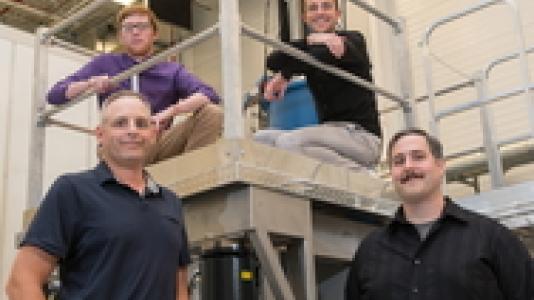
A thorough investigation of silicon deposition on Ag(111) was performed by researchers in the Center for Nanoscale Materials’ Electronic & Magnetic Materials & Devices Group and Northwestern University using advanced surface science characterization methods. Contrary to popular belief, the results showed that atomically thin sheets of silicene do not grow on Ag(111). Rather, a surface alloy phase of silicon with silver occurs until a critical concentration is reached and bulk Si(111) precipitates out. The Si(111) platelets are terminated with a well-known silver reconstruction. There is a clear electronic transition from metallic to near bulk-like semiconducting from the surface alloy phase to the Si(111) two-dimensional platelets
Having fueled the microelectronics industry for over 50 years, silicon is arguably the most studied and influential semiconductor. With the recent emergence of two-dimensional materials (e.g., graphene, MoS2, phosphorene, etc.), it is natural to contemplate the behavior of silicon in the two-dimensional limit. Guided by atomic-scale studies using ultrahigh-vacuum (UHV) scanning tunneling microscopy and spectroscopy, the two-dimensional limits of silicon growth on Ag(111) were investigated.
In contrast to previous reports of a distinct sp2-bonded silicene allotrope, the evolution of apparent surface alloys (ordered two-dimensional silicon-silver surface phases) were observed, which culminate in the precipitation of crystalline, sp3-bonded Si(111) nanosheets. These nanosheets are capped with a √ 3 honeycomb phase that is isostructural to a √ 3 honeycomb-chained-trimer reconstruction of silver on Si(111). Further investigations revealed evidence for silicon intermixing with the Ag(111) substrate followed by surface precipitation of crystalline, sp3-bonded silicon nanosheets. These conclusions are corroborated by ex situ atomic force microscopy, transmission electron microscopy, Raman spectroscopy, and X-ray photoelectron spectroscopy. Even at the two-dimensional limit, scanning tunneling spectroscopy shows that the sp3-bonded silicon nanosheets exhibit semiconducting electronic properties.
The basis for reports of silicene (the two-dimensional silicon analog to graphene) is from studies of silicon growth on silver substrates. The new results show that silicene growth has been misinterpreted in the literature and is not likely to form on Ag(111), which challenges whether or not it has yet to be experimentally achieved. The bulk silicon-silver alloy that forms instead, however, may be useful for other types of applications.
The work at CNM included silicon growth, scanning tunneling microscopy and spectroscopy, atomic force microscopy, and Raman spectroscopy. Transmission electron microscopy and X-ray photoelelctron spectroscopy were performed at Northwestern University.
A.J. Mannix et al., ACS Nano, 8, 7538 (2014).
In the News
August 2014